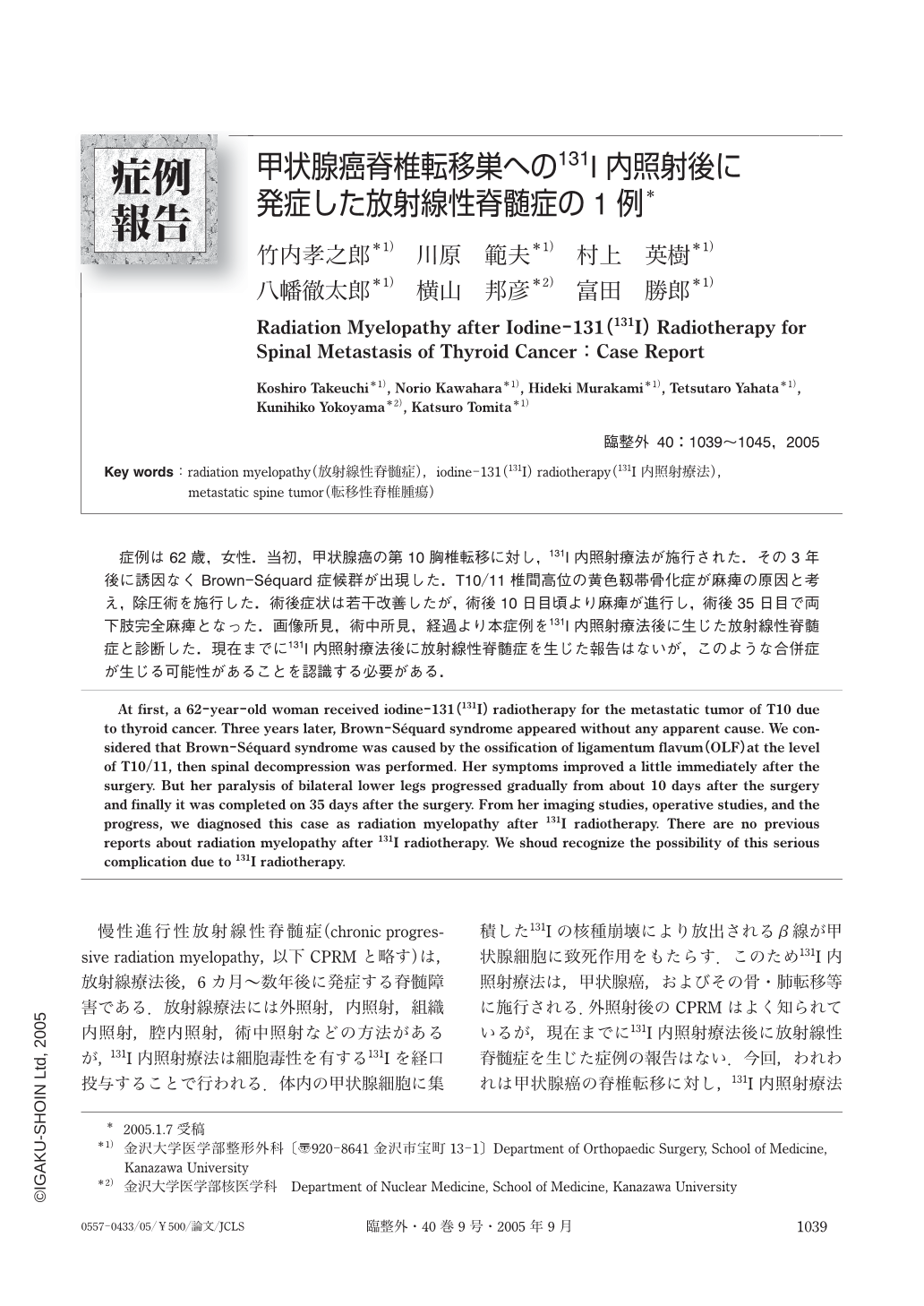Japanese
English
- 有料閲覧
- Abstract 文献概要
- 1ページ目 Look Inside
症例は62歳,女性.当初,甲状腺癌の第10胸椎転移に対し,131I内照射療法が施行された.その3年後に誘因なくBrown-Sequard症候群が出現した.T10/11椎間高位の黄色靱帯骨化症が麻痺の原因と考え,除圧術を施行した.術後症状は若干改善したが,術後10日目頃より麻痺が進行し,術後35日目で両下肢完全麻痺となった.画像所見,術中所見,経過より本症例を131I内照射療法後に生じた放射線性脊髄症と診断した.現在までに131I内照射療法後に放射線性脊髄症を生じた報告はないが,このような合併症が生じる可能性があることを認識する必要がある.
At first, a 62-year-old woman received iodine-131 (131I) radiotherapy for the metastatic tumor of T10 due to thyroid cancer. Three years later, Brown-Sequard syndrome appeared without any apparent cause. We considered that Brown-Sequard syndrome was caused by the ossification of ligamentum flavum (OLF) at the level of T10/11, then spinal decompression was performed. Her symptoms improved a little immediately after the surgery. But her paralysis of bilateral lower legs progressed gradually from about 10 days after the surgery and finally it was completed on 35 days after the surgery. From her imaging studies, operative studies, and the progress, we diagnosed this case as radiation myelopathy after 131I radiotherapy. There are no previous reports about radiation myelopathy after 131I radiotherapy. We shoud recognize the possibility of this serious complication due to 131I radiotherapy.

Copyright © 2005, Igaku-Shoin Ltd. All rights reserved.


